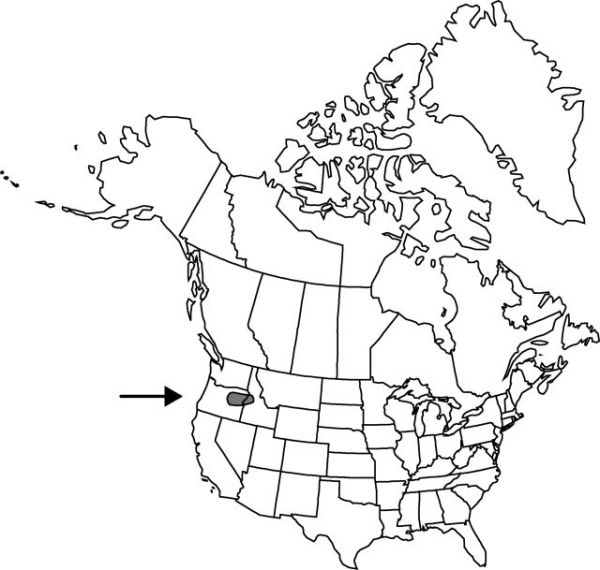Allium madidum
Proc. Amer. Acad. Arts 14: 228. 1879.
Bulbs 1–3, larger bulbs each usually with cluster of 10–30 easily detached bulbels to one side of base, not clustered on stout, primary rhizome, globose to ovoid, 1–1.6 × 0.8–1.5 cm; outer coats enclosing 1 or more bulbs, brownish, membranous, without fibers; inner coats white to pink; inner and outer coats frequently without obvious reticulations, these, when present, contorted. Leaves persistent, green at anthesis, 2, basally sheathing, sheaths not extending much above soil surface; blade solid, flat or channeled, 10–25 cm × 1–4 mm, margins entire. Scape persistent, solitary, erect, solid, ± terete, sometimes ridged, 10–20 cm × 1–2 mm. Umbel persistent, erect, compact, 10–20-flowered, hemispheric, bulbils unknown; spathe bracts persistent, 2, 5–7-veined, ovate, ± equal, apex acuminate. Flowers campanulate, 6–10 mm; tepals erect or ± spreading, white with prominent green or pink midveins, lanceolate, ± equal, becoming papery in fruit, margins entire, apex obtuse to acuminate, becoming involute at tip; stamens included; anthers white or yellow; pollen yellow; ovary crestless or obscurely crested; processes 3, low, central, rounded, minute; style linear, equaling stamens; stigma capitate, unlobed or slightly lobed; pedicel 5–12 mm. Seed coat dull; cells ± smooth. 2n = 28, 42.
Phenology: Flowering May–Jul.
Habitat: Seasonally wet meadows
Elevation: 1100–2000 m
Discussion
Allium madidum is found in the Blue Mountains, Oregon and in Idaho near Payette Lake and New Meadows.
Selected References
None.
